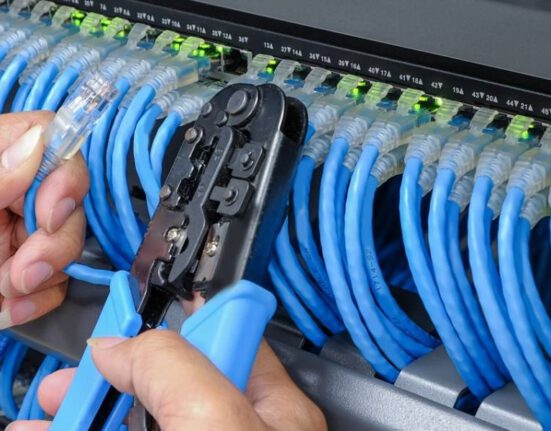Ethernet is a family of wired computer networking technologies. It is commonly used in local area networks, metropolitan area networks, and wide area networks. Ethernet was first introduced in the 1980s and was standardized in 1983 as IEEE 802.3. Today, Ethernet is widely used as a way to connect two computers together. It is a common choice for home and business networks. Its widespread adoption is due to the ubiquity of Ethernet technology and its ability to deliver high-speed data transfer.
Because Ethernet is a shared medium, the signal quality starts to degrade as the length of the segments increases. To prevent this, Ethernet has a rule for sending packets that defines how the network should respond to a collision. In order to prevent collisions and maintain data integrity, devices use Ethernet’s Carrier Sense Multiple Access/Collision Detection Protocol (CSMA/CD). The CSMA/CD protocol allows devices to automatically determine whether the network is available to send a packet. If two nodes try to send a packet at the same time, this is known as a packet collision.
While it was initially difficult to implement, Xerox PARC researchers eventually found a solution to the problem of packet collision. By 1972, Bob Metcalfe, a Ph.D. student at Harvard, created an experimental Ethernet system that could link servers and mainframes at speeds of 2.94 Mbps. Initially, Ethernet was not much more than a network of computer cables linked together with inexpensive coaxial cable. By the mid-1980s, Ethernet had become the industry standard.
Ethernet is one of the oldest ways to connect to the Internet. It has many uses and has the ability to handle bandwidth-intensive applications. It is a common choice for VE businesses. Ethernet is also used in combination with other devices to provide remote access. Cable-modem technology, for example, is another common application. Once installed, Ethernet is an excellent way to connect to the Internet. And because Ethernet uses standardized information, there is no need to worry about compatibility.
Ethernet is one of the most popular networking technologies. It can connect two computers or more over a wired network. Ethernet is compatible with wireless networks. The protocol is fast, stable, and secure. And it can be used in home and office networks as well as in large networks. In fact, Ethernet is the industry standard for computer networking and has been used for over 50 years. This technology is widely used, and you can find it in any modern home or business.
The popularity of Ethernet was initially driven by its affordability. Eventually, Ethernet technology was developed to be more powerful, while maintaining backward compatibility. The mid-1990s saw Ethernet’s throughput reach 100 megabits per second. Since then, the IEEE has continued to improve the protocol’s speed. Today’s versions of Ethernet can support operations up to 400 gigabits per second. This is an excellent combination of price and performance.
Ethernet is more secure than wireless networks, and you can control who can access LAN data. However, Ethernet is less mobile, so you cannot move many devices. It is also less flexible than wireless networks, and you cannot add new users as easily as you can with wireless. It is often a better choice for long-range applications like video games. Ethernet is also less expensive than Wi-Fi. So if you’re looking for an affordable and reliable internet connection, Ethernet may be the way to go.
Ethernet is still one of the most reliable types of internet connection technology. It works by allowing computers to communicate with each other and is widely used for computer networking. Today, there are two types of Ethernet: 10Mbps and 100Mbps. If you need high-speed Ethernet, you’ll likely need to upgrade your hardware. For the most advanced versions, you’ll need a high-speed Ethernet router with a high-performance chip. However, if you’re in the market for a fast and reliable Internet connection, 100Mbps is a good starting point.
There are several different categories of Ethernet cables. Cat 3 and Cat 5 are the least expensive. However, Cat 5e and Cat 6 are more efficient. However, the speed of the former two is lower than the latter. For industrial environments, Cat 6 and 7a are ideal. Cat 5e is the fastest and is more cost-effective. But it is not recommended for use outdoors as it is less resistant to moisture and other environmental factors. Nevertheless, these two cables can be used for long distances.














Leave feedback about this